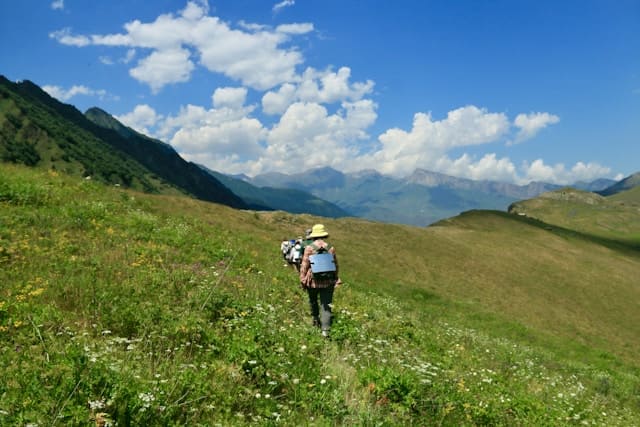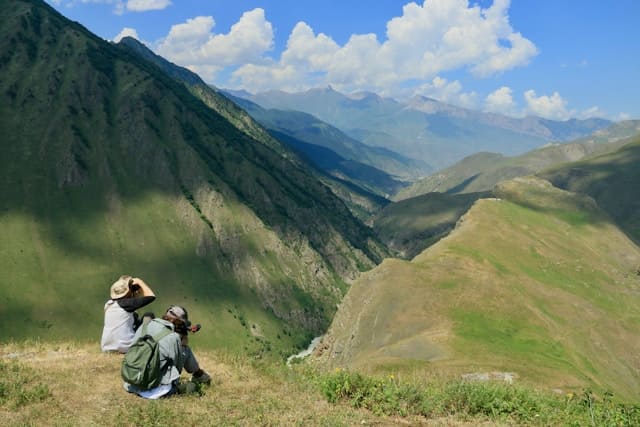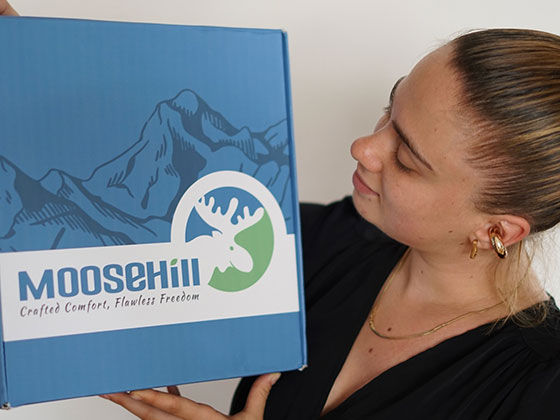Essential Tips for Knee Protection While Hiking
Hiking is a wonderful outdoor activity that allows you to connect with nature and challenge yourself physically. However, it's important to protect your knees while hiking to avoid injuries and ensure a successful trip. In this article, we will provide you with essential tips to optimize your hiking experience and safeguard your knees.
Tips for Knee Protection:
-
Maintain Proper Body Alignment:
When hiking, remember that it's not just about moving your feet. Pay attention to your entire body's movement. Swing your arms to balance yourself and adjust your gait. Keep your back straight with your shoulders relaxed and sunk. Breathe deeply through your abdomen and make sure your feet touch the ground with all parts of your soles. -
Mindful Foot Placement:
Ensure that your feet make full contact with the ground while hiking. Start by landing on your heel and then roll forward to your toes. This technique helps distribute the impact evenly and reduces strain on your knees. -
Find the Right Rhythm:
Maintain a comfortable pace while hiking. Aim to walk and talk without feeling out of breath. Avoid exceeding a pulse rate of 90-120 beats per minute to prevent overexertion. -
Practice Deep Breathing:
Focus on maintaining a steady and even breathing pattern throughout your hike. Deep breaths provide your muscles with an adequate oxygen supply and help you stay energized. -
Pay Attention to Posture:
Keep your shoulders relaxed and your back straight during the hike. Deep abdominal breathing will help maintain good posture and alleviate stress on your knees.

Key Principles for Knee Protection:
-
Control Your Speed:
Avoid pushing yourself too hard and walking at an excessive pace. This can drain your energy and hinder your progress. If hiking with a group, find a companion who shares your speed to ensure a comfortable and enjoyable experience. -
Prioritize Knowledge and Experience:
When starting out, focus on gradually increasing your hiking duration rather than attempting to cover long distances. This approach allows you to understand your physical abilities and adjust your intensity accordingly. -
Learn to Rest:
Rest is crucial during outdoor hiking. Don't overexert yourself, as it may lead to diminishing returns. Adjust your rest time based on your personal needs and physical condition. -
Adopt Proper Walking Techniques:
Everyone has their own walking style, and it's important to find a comfortable and efficient way to walk while hiking. This allows you to use your energy effectively and minimize strain on your knees. -
Timely Replenishment:
During a hike, your body burns a significant amount of calories. To maintain your energy levels, make sure to replenish with water and food at regular intervals. Consider drinking more water before climbing steep slopes and, if necessary, add salt to your drinking water or choose functional drinks when sweating excessively in hot weather. -
Self-Assessment:
Before embarking on an outdoor hike, accurately assess your physical fitness and abilities. Consider whether you can keep up with the pace of your peers or handle the planned activities without overstressing your knees. Avoid overexertion and resist the urge to catch up if you fall behind, especially during downhill sections. -
Strengthen Leg Muscles:
Well-developed leg muscles can alleviate pressure on the knees and minimize the risk of injuries. Focus on exercises that strengthen your quadriceps (front thigh muscles) and cruciate ligaments. Avoid incorrect postures during exercise to prevent unnecessary strain and injuries. -
Prioritize Knee Protection:
The knee joint is vulnerable to damage, so it's essential to prioritize its protection. Consider using hiking poles and knee pads to provide support and reduce stress on your knees. Hiking poles can effectively distribute the weight and reduce the impact on your knees, while knee pads provide additional cushioning and support.

Additional Tips:
-
Descend Safely:
When going downhill, avoid running or jumping. Instead, take it slow and be cautious. The correct technique involves shifting your center of gravity slightly backward and lowering it. Ensure that your front foot is securely planted before transferring your weight. Always keep one foot supported on the ground for stability. -
Minimize Weight:
Before starting your hike, assess your ability and pack accordingly. Even when climbing a small mountain, it's normal to hike for more than four hours. As a general rule, limit your backpack weight to no more than one-fourth of your body weight. When descending, control your pace to protect your knees. Even in exceptional cases, the load should not exceed one-third of your body weight. -
Warm Up:
Prior to hiking, engage in preparatory activities such as stretching to warm up your joints, muscles, and ligaments. You can also massage the lower edges of your knees with your fingers to promote joint lubrication. -
Utilize Proper Equipment:
Invest in comfortable and shock-absorbing shoes suitable for hiking. Soft terrains like grass, gravel slopes, and snow are more knee-friendly. However, ensure your shoes provide good traction and be mindful of those walking behind you on gravel roads. -
Avoid Locking Joints:
When your thighs become fatigued, it's common to unconsciously lock your joints by straightening your legs. While this temporarily relieves pressure on your thigh muscles, it can strain your knees and lead to injuries such as knee strain, impact injuries, ankle strains, and sprains. -
Follow Natural Signs:
Pay attention to natural landmarks along your hiking route, such as rivers, lakes, rock walls, or distinctive hills. These signs can help you find your way back if you get lost, reducing unnecessary distances traveled. -
Develop Directional Judgment:
If you don't have a compass, you can use the sun to determine your approximate direction. When the sun is shining, observe your shadow to gain a sense of direction. -
Time Management:
Carry a watch while hiking to keep track of time. This allows you to estimate the remaining distance, distribute your energy wisely, and adjust your rest periods. If you realize you won't reach your destination within the planned time, find a suitable campsite to avoid hiking at night. -
Adjust Your Pace:
Regularly adjust your pace while hiking. Taking large steps can strain your knees and lead to lactic acid buildup, causing soreness and fatigue. Opt for smaller steps and a slower pace to reduce lactic acid accumulation. This also promotes better knee movement and faster lactic acid release. Avoid disrupting your natural rhythm by taking large steps on flat ground or speeding up unnecessarily.
The purpose of hiking is not solely to cover a specific distance, but rather to find a walking style that suits you and makes your body feel comfortable. By following these essential tips and principles, you can protect your knees, enhance your hiking experience, and ensure a safe and enjoyable journey in the great outdoors.
--- END ---
For more details about hiking Clothing , please click here to choose the best-fitting products!

【Hiking Advice】
· Hiking Tips: What are the best foods for hiking?
· Hiking Tips for Beginners
· The Golden Rules for Hiking in 2024
· Top 7 Most Common Mistakes When Hiking
【Biking Advice】
· What shorts do Mountain Bikers wear?
· Why Are Mountain Bike Shorts Padded Instead of the Seat?
· Comfortable and Stylish: 5 Expert Tips for Bike Shorts
【Golfing Advice】
· Do You Wear Pants or Shorts to Golf?
· Quick Guide: Choosing the Perfect Golf Pants
· 4 Tips to Efficiently Choose Your Golf Clothing and Accessories
【Ski & Snow Advice】
· What pants are good for snow
· Can Snow Pants Be Used as Rain Pants?










